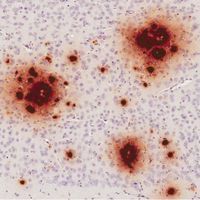Login
Subscribe404
Not Found
Is this what you were looking for?
tag sky microbiome disease medicine genetics genomics neuroscience

Engineering the Microbiome: CRISPR Leads the Way
Mariella Bodemeier Loayza Careaga, PhD | Mar 15, 2024 | 10+ min read
Scientists have genetically modified isolated microbes for decades. Now, using CRISPR, they intend to target entire microbiomes.

A Microbial Link to Parkinson’s Disease
Mariella Bodemeier Loayza Careaga, PhD | Dec 4, 2023 | 6 min read
Haydeh Payami helped uncover the genetic basis of Parkinson’s disease. Now, she hopes to find new ways to treat the disease by studying the gut microbiome.

Redesigning Medicine Using Synthetic Biology
Alison Halliday, PhD, Technology Networks | Jun 21, 2023 | 5 min read
Drawing inspiration from nature, synthetic biology offers exciting opportunities to transform the future of medicine.

Onward and Upward!
Kristie Nybo, PhD | Sep 8, 2023 | 9 min read
At The Scientist, we are strengthening our roots while reaching for the sky.

A Pioneer of The Multiplex Frontier
Rashmi Shivni, Drug Discovery News | May 20, 2023 | 10 min read
George Church is at it again, this time using multiplex gene editing to create virus-proof cells, improve organ transplant success, and protect elephants.

Herpes Viruses Implicated in Alzheimer’s Disease
Anna Azvolinsky | Jun 21, 2018 | 5 min read
A new study shows that the brains of Alzheimer’s disease patients have a greater viral load, while another study in mice shows infection leads to amyloid-β build up.

Large Scientific Collaborations Aim to Complete Human Genome
Brianna Chrisman and Jordan Eizenga | Sep 1, 2022 | 10+ min read
Thirty years out from the start of the Human Genome Project, researchers have finally finished sequencing the full 3 billion bases of a person’s genetic code. But even a complete reference genome has its shortcomings.

Defying Dogma: Decentralized Translation in Neurons
Danielle Gerhard, PhD | Sep 8, 2023 | 10+ min read
To understand how memories are formed and maintained, neuroscientists travel far beyond the cell body in search of answers.

The Inside Guide: The Gut Microbiome’s Role in Host Evolution
Catherine Offord | Jul 1, 2021 | 10+ min read
Bacteria that live in the digestive tracts of animals may influence the adaptive trajectories of their hosts.

Week in Review: May 12–16
Tracy Vence | May 16, 2014 | 3 min read
Antidepressant could prevent Alzheimer’s plaques; 12,000-year-old human skeleton sequenced; disentangling the mystery of octopus arms; taking a look at the ocular microbiome